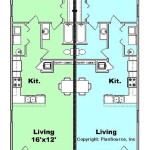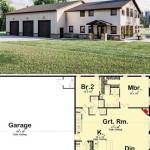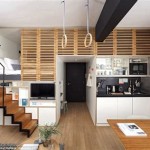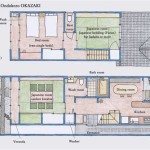Grid Paper: A Foundation for Effective Floor Plan Design
Grid paper, sometimes referred to as graph paper, is a writing paper printed with a grid of fine lines, making it an invaluable tool for various applications, including architectural design, engineering, and mathematics. When used for floor plans, grid paper provides a structured framework that facilitates accurate scaling, spatial visualization, and iterative design development. This article explores the various ways in which grid paper aids in the creation of functional and aesthetically pleasing floor plans, examining its advantages, practical applications, and considerations for effective usage.
The essence of a floor plan lies in accurately representing the spatial relationships within a building. Grid paper, with its consistent and measurable grid lines, ensures proportional representation. Each square on the grid can be assigned a fixed measurement, such as one foot or one meter, allowing the designer to translate real-world dimensions onto the paper with precision. This scalability is critical for maintaining the integrity of the design and avoiding costly errors during construction. Using grid paper helps maintain consistency in drawing elements like walls, doors, windows, and furniture to the correct scale.
The process of designing a floor plan usually involves multiple iterations and revisions. Grid paper is ideally suited for this iterative process. Designers can easily sketch, erase, and redraw elements without sacrificing the underlying structural framework. The grid provides a consistent reference point, allowing for easy adjustments and refinements as the design evolves. This tactile and visual approach fosters creativity and facilitates exploration of different design options before committing to a digital rendering or blueprint. The simplicity of sketching on grid paper promotes quick conceptualization and exploration of design possibilities.
Traditionally, architectural design heavily relied on manual drafting techniques, where accuracy and precision were paramount. Grid paper provided the perfect medium for generating precise drawings. Experienced architects and drafters used grid paper to create detailed floor plans that could be directly translated into construction documents. Although computer-aided design (CAD) software has become ubiquitous, grid paper remains a valuable tool for initial brainstorming, conceptual sketches, and quick revisions, bridging the gap between ideas and digital representation. Many experienced architects keep using grid paper for quick sketches before transferring the plans to CAD programs.
Facilitating Scaled Drawing and Spatial Accuracy
The primary benefit of using grid paper for floor plans is its ability to facilitate scaled drawing. Before commencing the design process, the designer must predetermine a scale that is proportional to the size of the building. Common scales for floor plans include 1/4 inch = 1 foot, 1/8 inch = 1 foot, or 1 cm = 1 meter. Once the scale is established, each square on the grid represents a specific unit of measurement. For example, if the scale is 1/4 inch = 1 foot, then each square represents a one-foot square in the real world. This allows designers to accurately represent the size and position of walls, doors, windows, and other architectural elements.
Spatial accuracy is crucial in floor plan design. The placement of walls, the size of rooms, and the location of openings must be carefully considered to ensure functionality and livability. Grid paper enables designers to visualize the spatial relationships between different areas of the building. The grid lines serve as a visual guide, helping to maintain alignment and proportionality. This is especially important when designing complex floor plans with multiple rooms, corridors, and staircases.
Consider, for instance, the design of a kitchen. Using grid paper, the designer can precisely allocate space for appliances, countertops, and cabinets. The grid allows for accurate representation of clearances around appliances, ensuring that there is adequate space for movement and operation. Similarly, in the design of a bathroom, the grid can be used to ensure that fixtures are placed in accordance with building codes and accessibility requirements. The grid provides a tangible tool for ensuring that the floor plan meets both functional and aesthetic requirements.
Moreover, the consistent grid pattern helps identify potential design flaws early in the process. For example, if a room appears too small or a corridor is too narrow, the designer can easily identify and correct the problem by adjusting the layout on the grid. This iterative approach minimizes the risk of costly errors during the construction phase.
Furthermore, when designing in multiple dimensions, such as adding elevation changes or sections through the building, grid paper can be used to maintain a consistent scale and alignment. This is particularly useful for designing staircases and ramps, where accuracy is paramount for safety and code compliance.
Aiding Iterative Design and Revision Processes
Floor plan design is rarely a linear process. It often involves multiple iterations, revisions, and refinements before arriving at the final design. Grid paper is perfectly suited for this iterative process. Designers can quickly sketch out different design options, evaluate their strengths and weaknesses, and make adjustments as needed. The grid provides a consistent reference point, allowing for easy comparison between different design iterations.
One of the key advantages of using grid paper for iterative design is its ease of use. There's no need to boot up a computer or learn complex software. Designers can simply grab a pencil and start sketching. This allows for a more fluid and intuitive design process. Ideas can be quickly captured and explored without the constraints of technology. This unstructured approach helps to encourage creativity and innovation.
During the revision process, grid paper facilitates the easy modification of existing design elements. Erasing and redrawing is a simple task, and the grid ensures that any changes maintain the desired scale and alignment. This is particularly useful when making small adjustments to room sizes, wall positions, or the placement of doors and windows. The visual nature of the grid makes it easy to see the impact of any changes on the overall layout.
Furthermore, grid paper allows for collaborative design. Multiple designers can work together on the same floor plan, making annotations and revisions as needed. The physical nature of the paper allows for easy communication and discussion. Designers can point to specific areas of the plan, make suggestions, and share ideas. This collaborative approach can lead to more innovative and well-considered designs.
The simplicity of using grid paper for iterative design makes it an ideal tool for engaging clients in the design process. Clients can easily understand and visualize the floor plan, providing valuable feedback and insights. Moreover, clients can participate in the design process by sketching out their own ideas and preferences on the grid. This collaborative approach helps to ensure that the final design meets the client's needs and expectations.
Bridging the Gap Between Conceptualization and Digital Implementation
While CAD software has revolutionized architectural design, grid paper still plays a vital role in the initial stages of the design process. It serves as a bridge between conceptualization and digital implementation. Designers often use grid paper to sketch out initial ideas, explore different design options, and refine their concepts before transferring them to a digital platform.
The tactile and visual nature of grid paper fosters creativity and allows designers to explore different design possibilities without the constraints of software. The act of sketching on paper can stimulate the imagination and lead to more innovative and unconventional designs. The freedom to experiment and make mistakes is essential in the early stages of the design process. Mistakes can be easily erased and new ideas can be quickly explored.
Once the initial design concepts have been fleshed out on grid paper, they can be translated into a digital format using CAD software. The grid provides a precise template for creating accurate and detailed digital drawings. The measurements and proportions established on the grid can be directly transferred to the digital model. This ensures that the digital representation accurately reflects the original design intent.
Moreover, grid paper can be used to create quick and easy renderings of floor plans. By adding shading, color, and textures to the grid drawing, designers can create a more realistic and visually appealing representation of the space. These renderings can be used to communicate the design to clients, stakeholders, and construction teams.
Even when working primarily with CAD software, grid paper remains a valuable tool for making quick revisions and annotations. Hand-drawn annotations on a printed floor plan can be easily communicated to the design team or contractors. This can be particularly useful for addressing specific issues or making minor adjustments during the construction process.
In summary, grid paper serves as a foundational tool in floor plan design. Its inherent structure facilitates accurate scaled drawing, promoting spatial understanding and consistency. The iterative design process greatly benefits from the flexibility and ease of use offered by grid paper, allowing for rapid prototyping and revision. Furthermore, it bridges the gap between initial conceptualization and digital implementation, ensuring that the final digital drawings stay faithful to the original design ideas.

Printable Graph Paper Free Com

Ringel House Plan Graph Paper Second Floor Drawing Plans Design

Printable Graph Paper Free Com

Free Graph Paper Template Printable And Grid

Graph Paper To Virtual The Heardmont Floor Plan Welcome

How To Make An Old Fashioned Floor Plan With Graph Paper Dans Le Lakehouse

How To Draw A Floor Plan Scale Measuring Sketching

Printable Graph Paper Kitchen Design

A Super Simple Method For How To Draw Floor Plan Hampton Redesign

A Super Simple Method For How To Draw Floor Plan Hampton Redesign
Related Posts








